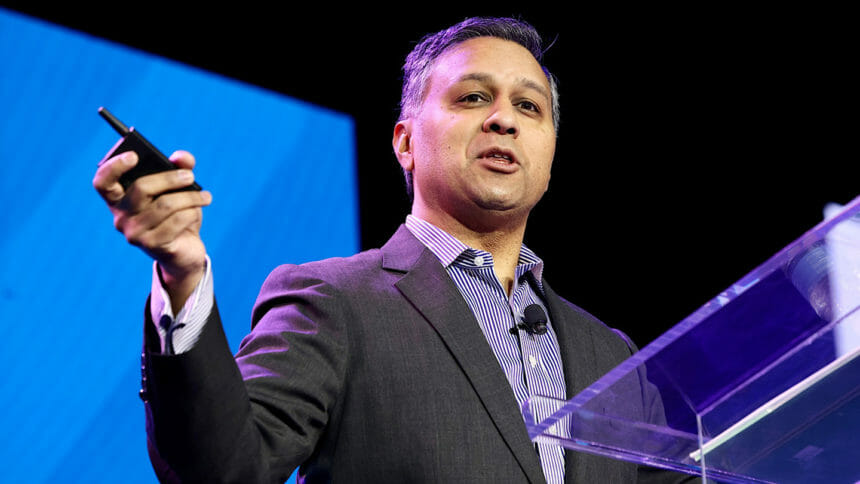
SAN DIEGO — The future of healthcare in America will include an ongoing, and likely increasing, tug away from institutional skilled nursing care. Leading that movement will be rising collaboration between senior living and home care providers, fueled in particular by technology advances, an expert said Thursday at the 2023 NIC Spring Conference.
“We, as a nation, are redefining what counts as care,” said Nirav Shah, MD, MPH, a senior scholar at Stanford University’s School of Medicine and chief medical officer of American Health Associates. Insurers, including Medicare, will be willing to reward healthful activities and habits, he emphasized.
More care is moving toward “homes,” be that individuals’ own houses or homes in the sense of senior care and living, added Shah, an advisor to the director of the Centers for Disease Control & Prevention and board member of numerous distinguished healthcare entities. Care, he explained, could increasingly mean food and transportation for patients (and their caregivers). It also will mean more fully including family members as part of the care team.
Many efforts should take place before to help patients avoid or bypass nursing home settings, said Shah, whose expertise includes nursing home operational improvements and the expansion of PACE programs.
“We’ve entered an era of mass customization. Low-cost, personalized customization can address everyone [patients, clinicians, payers],” he said. When he was COO of Kaiser Permanente in Southern California, for example, he said it became apparent that “pre-hab” steps — such as risk-proofing living areas, losing weight and quitting smoking — help keep patients healthier longer and remove financial strain from the continuum. This is especially useful for providers under capitation models, he added.
Innovation — “elegant integration” in Shah’s words — is essential. This could conceivably mean adding a “deprescriber” on staff to help decrease patients’ use of multiple drugs, thus lowering the chances of adverse interactions.
It also will mean turning to patients and their non-paid family members more often to ease system pressures.
“The future is patient-reported outcomes measures,” Shah said, explaining that artificial intelligence (AI) has already made this more possible than many realize. By using virtually daily measurements, rather than quarterly physician-office visits, for example, insurers and clinicians can head off declining or risky conditions, thus preventing expensive hospitalizations or nursing home placement, Shah explained.
AI already can diagnose depression 94% of the time and anxiety 93% of the time via automated scanning that quickly takes place during Zoom call evaluations, he said, citing some of his study work still under review.
“AI is setting a new bar,” he said.
“It’s scary, what AI can do,” he added at another point.
His current work includes taking a look at data from sensors in PACE participants’ homes that capture and objectively record a resident’s actions. AI observes and maps movements in order to capture and quantify activities of daily living.
“It’s objective, not subjective, and can quantify vitals such as behavior, walking, sleeping, eating and frequency of showers,” he noted of censor data. Other forms of AI can be manifested in hearing aids, for example. They can act as GPS systems, count words heard from real people (as opposed to from a television), how many words the person himself says and more.
“All this technology exists now,” Shah pointed out. “I expect we’ll find out loneliness is an epidemic in America.”
He said that in the not too distant future, 90% of healthcare will take place through smartphones or tablets. By having people periodically talk into a phone, for example, droopy eyes and possible slurring can be identified and monitored.
“Digital diagnostics are leading to digital treatment,” he said.
“AI will take over the boring repetitive tasks,” he quickly added. “Today, AI works best with humans in the loop.We’re not going to take doctors or nurses out of the loop — we’re going to augment them. Tech is here to stay and can help unburden your staff.”




